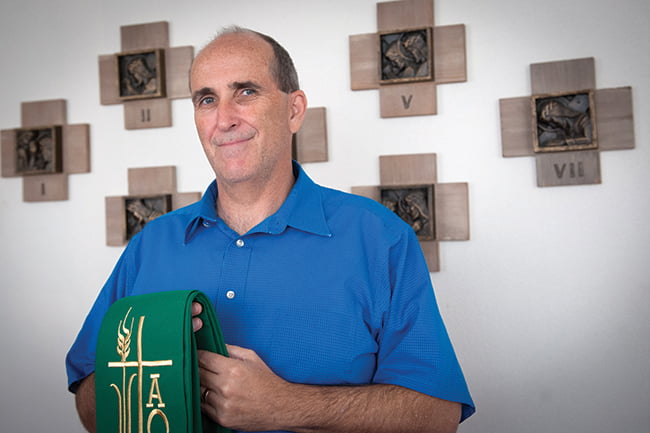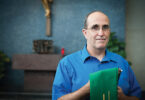
Leon Suprenant is the pastoral associate for administration in the office of the permanent diaconate. He also blogs at: www.archkck.org/blog.
We’re very much creatures of habit. We grow accustomed to set ways of doing things and it can be unsettling to have our routine disrupted, even when the change is a positive one.
For that reason, when Second Vatican Council (1962-65) and Pope Paul VI (1967) called for the reestablishment of the permanent diaconate, the faithful were to undergo a startling change in their experience of the church. This change wasn’t felt in northeast Kansas until 2011, when the archdiocese ordained its first cohort of 17 permanent deacons.
We are truly blessed to have so many outstanding Catholic men stepping forward to answer the church’s call for deacons, and I’m always excited to hear about the wonderful fruits the diaconate is already bringing forth. Yet, we have to acknowledge that the diaconate — here and throughout much of the church — is still a young and developing ministry.
Further, here in Kansas City, the majority of parishes do not yet have a deacon assigned to it, and having these “men in gray” around the parish — and especially on the altar — is a change to which many have not yet grown accustomed. We are all learning as a church how best to take advantage of this awesome ministry.
It’s important to note that the church did not invent the permanent diaconate in the 1960s, but rather recovered a lost treasure. This “treasure” is well-attested to in Scripture. The church has traditionally understood the selection of “seven reputable men” in Acts 6:3 as a distinct ministry of Christian service that would take further shape over the following decades and centuries. There are several other references to deacons and their qualifications in the writings of St. Paul.
From the first three centuries of its existence, the church gradually clarified and articulated three levels of holy orders: the episcopate (bishops), presbyterate (priests) and diaconate (deacons). The Didache, an early church document written around the year 100, advises the church to “choose yourselves bishops and deacons worthy of the Lord, mild men, fair-minded, truthful and reliable, for they too fulfill toward you the offices of prophets and teachers.”
The Church Fathers not only refer to the liturgical and catechetical role of the deacon, but even more to his social and charitable responsibilities. A fourth- century text describes the deacon as “the eye, the ear and the mouth of the bishop.” The deacon has always been a bridge between the faithful —especially the poor and marginalized — and the church, represented by the local bishop.
Under the guidance of the Holy Spirit, the church in our time has restored this ministry, which is so reflective of the pastoral genius of our Holy Father Pope Francis, who yearns to bring the merciful love of Christ to all.
Next month, we will look at how the deacon’s liturgical role connects with his fundamental commitment to social concerns and the works of charity.

